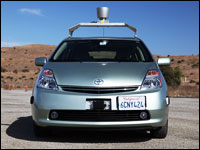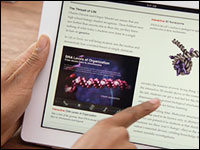
Change may no longer be the only constant; danger is proving omnipresent and therefore a constant variable in enterprise IT planning.
“In today’s world where a shooter can walk in the front door of a church and open fire, there is really no place that is safe,” Henry Dewing, analyst at Forrester Research told TechNewsWorld. “Companies must take steps to act as responsible guardians of their employee body.”
Calling All Hands
“Not everyone is in the office when an emergency strikes, so contacting them through as many means as possible is required during the event,” Roberta Witty, research vice president at Gartner, told TechNewsWorld. “Text messaging and cell phones are becoming the top two forms of emergency notification.”
Mobile communications are leading the way in mass notification systems for a very good reason.
“Disasters can strike at any time without warning. If your key individuals are not at their primary locations to respond to the emergency, a robust, scalable, and reliable mobile solution is critical to get the word out quickly to those tasked with responding to the situation and ensure timely recovery of key business processes,” Frank Mahdavi, chief strategy officer for the emergency notification firm MIR3, told TechNewsWorld. “Mobile communication can therefore be very critical to continuity of operations and a company’s survival depending on the nature of the disaster.”
As handy and efficient as mobile devices are, though, they don’t always fit the bill in an emergency.
“This is only effective if employees have their registered device with them and operating when the notification happens,” said Forrester’s Dewing.
This point is exactly why most leading experts recommend a broader approach to mass notification.
“Gartner doesn’t recommend that you limit your end points to those devices; desktop interception, e-mail messages, public address systems and visual displays are all important to contacting as many people as possible,” advised Witty.
One Way Warning, Two Way Help
“Many notification systems — like plain old push e-mail linked to a mass distribution list — are just for one-way communications,” pointed out Dewing. “Good systems will also track responses and take appropriate action based on employee responses.”
“I know that Avaya and SendWordNow, and I believe Sybase 365, allow for replies so that employees that are notified can reply and those replies can be tracked and different communications processes initiated based on the answer,” he added.
Dewing cited a scenario as an example: Water-level monitors in the basement indicate that there is a flash flood impacting building 12 at XYZ Corp. Based on a list of employees who work in Building 12 or who work for organizations with a substantial number of employees in Building 12, or who were scheduled to be in a meeting in Building 12 based on corporate calendars, XYZ Corp. can send an e-mail, IM (instant message), and SMS (short message service) text message saying, “Flood warning. Please evacuate Building 12 immediately. Did you receive this message? Reply 1 for ‘yes, I am evacuating.’ Reply 2 for ‘yes, but I am not in the building.’ Reply 3 for ‘yes, but I am trapped in the building.'”
For all those who reply 1 — a second message asking if they are out can be sent in five minutes.
For those who are trapped, rescue teams can be dispatched immediately while the system instantly asks for their location.
How They Work
“Most are services, not solutions that a firm installs within their own data center,” explains Witty.
Although there are some generalities in how these systems work, much depends on the parameters set by the enterprise.
“How theses systems work is a very broad question. Basically, the system needs to get input, either from an automated system or from a company’s emergency response team, that there is a problem,” explained Dewing. “Based on preset rules, or manual actions taken by an emergency response committee, communications are sent out using IM, SMS or e-mail. Good systems allow for replies and track those responses.
“An event monitor can be established to track some potential situation — e.g., tied into National Weather Service emergency alerts — and then use employee directory data to identify those potentially affected.
“Then the system can be tied to an e-mail server, an SMS gateway and IM server, or the PBX (private branch exchange) to imitate a wide variety of communications depending on the event, and employees’ preferences, status and availability.”
Specific solutions vary widely, however.
“All of our mobile solutions are in essence thin clients running on a mobile smartphone connecting to our intelligent notification server platform via TCP/IP (transmission control protocol/Internet protocol),” explained Mahdavi. “All of our notification server platforms, be it our hosted SaaS (Software as a Service) service, or our on-premises deliverable applications, deploy the latest in Web-services technology to provide a feature rich list of API (application programming interface) calls that our mobile solutions leverage to send, receive, or respond to critical information from anywhere in the world.”
Failure to Notify
Other than the basic drawback of whether employees have their mobile devices with them and actually turned on, there are a few other drawbacks to using handsets.
“Given the small form factor, processing power, and screen size of most mobile devices, the amount and the format in which information can be presented or processed on such devices are limited,” said Mahdavi. “Therefore, full functionality of a client on a desktop PC is not possible or desirable on a mobile device.”
“A mobile notification solution must concentrate on key functions rather than mundane or repetitive tasks, i.e. data entry, contact records or group maintenance, or system administration, which precludes them from being the total solution,” he adds. “Furthermore, the mobile notification solutions depend on WiFi or cell phone carriers’ data availability to be effective, and as we all know too well, that can be a problem at times.”
In the end, deploying a mass notification system is decided solely as a business case and, as such, is based on an argument unique to each company.
“Depending on the nature of your business they may or may not be necessary,” said Mahdavi.
“College campuses would universally agree that they are critical and help them to adhere to the letter and Spirit of the Cleary act calling for timely warnings to students, faculty and staff of crimes that pose an ongoing threat to personal security,” said Dewing.
Wal-Mart uses a system to track weather, which — particularly in Tornado Alley or along the Gulf Coast during hurricane season — can significantly endanger loading dock employees at stores and warehouses, Dewing said.
There are also broader uses for the unexpected.
“ShoreTel‘s IP PBX automatically notifies all employees immediately when a 9-1-1 call is placed so that the response can be better coordinated by employees that might not otherwise be aware that something is going on,” Dewing said





















































